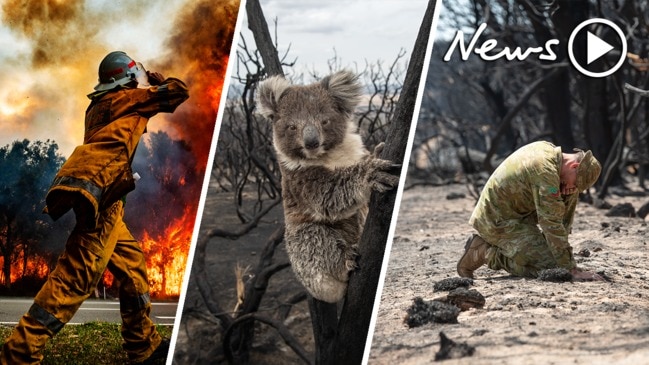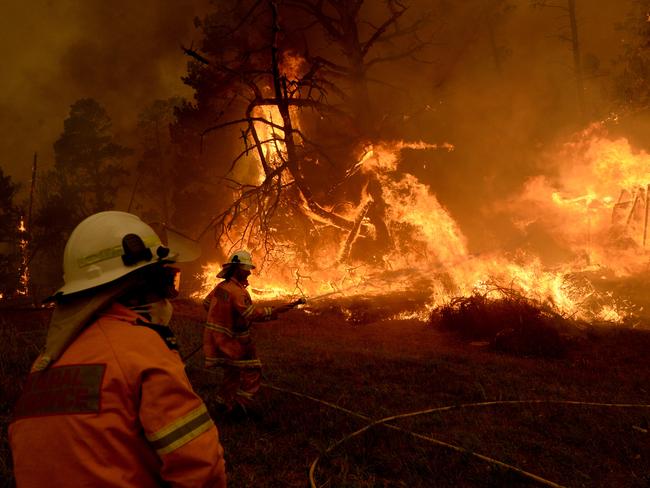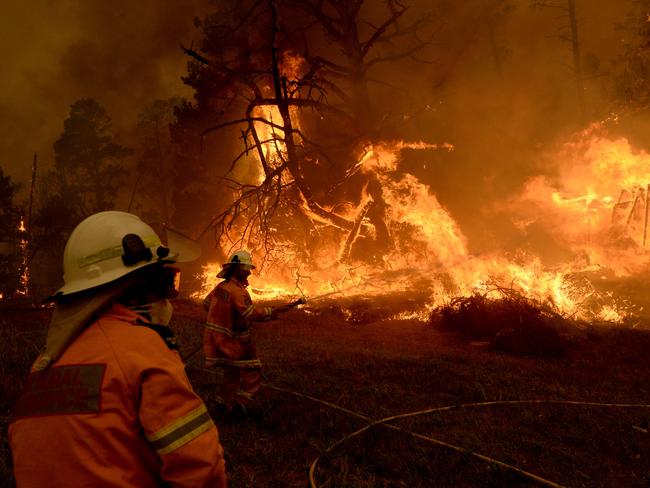NSW bushfires: How cost-cutting failed bush firefighters
Backburning operations conducted to contain “mega-blazes” claimed homes and wildlife but experts say the lack of preparation by the NSW government for the bushfire season left firefighters with no choice.

NSW
Don't miss out on the headlines from NSW. Followed categories will be added to My News.
Backburning operations designed to contain blazes contributed to property and wildlife losses, but a critical lack of preparedness for the bushfire season left firefighters with little option but to fight “fire with fire”.
More than half a dozen homes around Mt Tomah were lost in a backburning operation in the Blue Mountains — including that of a firefighter — when a fire was lit to stop the southwestern flank of the Gosper’s Mountain blaze.
Another 20 homes were also lost in Clarence and Bilpin, with some speculating these losses were also from backburns.
Another backburn conducted to stop the Green Wattle Creek fire from advancing has been blamed for property losses in Balmoral in the Southern Highlands, while a third almost took out Jenolan Caves after jumping firebreaks.

Experienced former NSW National Parks and Wildlife Service fire managers contacted by The Sunday Telegraph blamed a critical lack of resources to help tackle bushfires before they “blew up” for the over-reliance on backburns, which were conducted in their thousands.
This included inadequate numbers of experienced remote area firefighting teams (RAFT), who were responsible for putting out blazes in deep bushland.
In the case of the Green Wattle Creek fire, NPWS was alerted to two small fires started by lightning in the region after the fires were detected at 7am on November 27. NPWS RAFT commenced operations at 9am, but a National Parks source say the team was “retasked” to deal with another bushfire near Katoomba.

Two hours later, a large air tanker attended to one of the two fires, with another aircrew jumping on the second blaze at around 12.30pm along with local firefighters on the ground. However, deteriorating conditions forced crews to abort their missions at about 3pm.
MORE FROM LINDA SILMALIS:
Big squeeze: More than 10 million people to live in NSW by 2036
Melanoma: How a small mole led to skin cancer and toe amputation
After the fire had grown considerably and spotted across Burragorang dam, firefighters conducted a series of backburns in a bid to contain the blaze, which complicated its containment and enlarged the fire.
“Obviously, if RAFT had not been retasked, may have been a different story,” the source said.
“Knockdown may have been achievable.”
Over at the Gosper’s Mountain blaze, up to five backburns implemented to contain the blaze were lost, each one accelerating and expanding the fire area, the source said.
As well as a bigger rapid-response contingent, RAFT should be able to work at night, the source said.

In the last decade, voluntary redundancies and staff cuts at agencies such as NPWS and Forests NSW had resulted in the loss of skilled staff and planners — “people who know their patch and care about it”, the source said.
The loss of staff with intimate knowledge of fire behaviour in different parts of a park had meant the decline in strategic planning, or the use of methods such as “partial containment” where RAFT teams were tasked to contain fires at key locations to put out a fire front.
The local strategy here was to link in with rock platforms and rainforest-line gorges and low-fuel areas from very recent planned burns and wildfires, when mild fire weather conditions arose.

Given the conditions in the lead-up to this bushfire season were similar to those that led to the devastating fires in Victoria in 2002-03 and 2006-07, the state governments should have better prepared agencies for the fire threat, the source said.
“Reliance on backburning has taken precedence over targeting a fire at its weakest point with highly trained professional paid and volunteer resources,” the source said.
“The planning and operational approach needs to be reviewed thoroughly so that we can implement safely fall-forward strategies when the conditions are right.
“Because of the severe drought across NSW, the state should have been prepared for very large areas to be burnt this fire season.”
Had proper strategies been in place when the conditions were right, the area burnt could have been reduced by “at least a third or more”, the source said.

Instead of increasing the State’s preparedness for bushfires amid warnings of climate change contributing to an enhanced bushfire risk, NSW opposition environment spokeswoman Kate Washington said the government had instead sacked staff responsible for bushfire management and hazard reduction.
“It’s come to me from several frontline firefighters that we desperately needed more Remote Area Firefighting Teams,” she said.
“If more crews had been available, they tell me there’s a good chance some of these bushfires could have been extinguished much earlier.”

NSW RFS spokesman, Inspector Ben Shepherd, said firefighters were aware of the risks when conducting backburns, noting the firefighter who lost her home had participated in the Blue Mountains backburn.
He said the thousands of kilometres of backburns conducted this season had saved properties from advancing fires.
“Backburning is a tactic to control a fire and there were thousands of kilometres conducted successfully,” Mr Shepherd said.
“It is not without risk. The bigger risk is not doing anything.
“Introducing fire in a volatile environment is risky, but that’s why we have trucks and air support on standby. Firefighters are well aware of the risk.”

Mr Shepherd said “about half a dozen” homes were lost in one of the Blue Mountains backburns, with inquires to be conducted in the aftermath to determine any others.
Originally published as NSW bushfires: How cost-cutting failed bush firefighters
